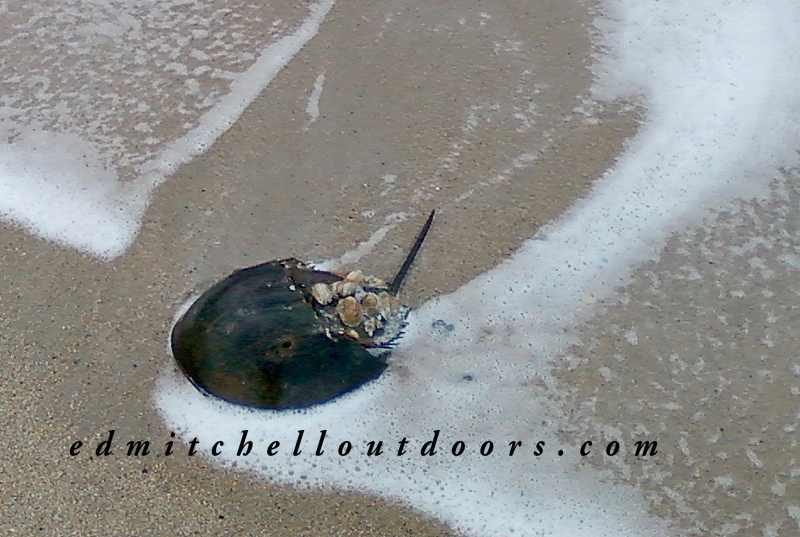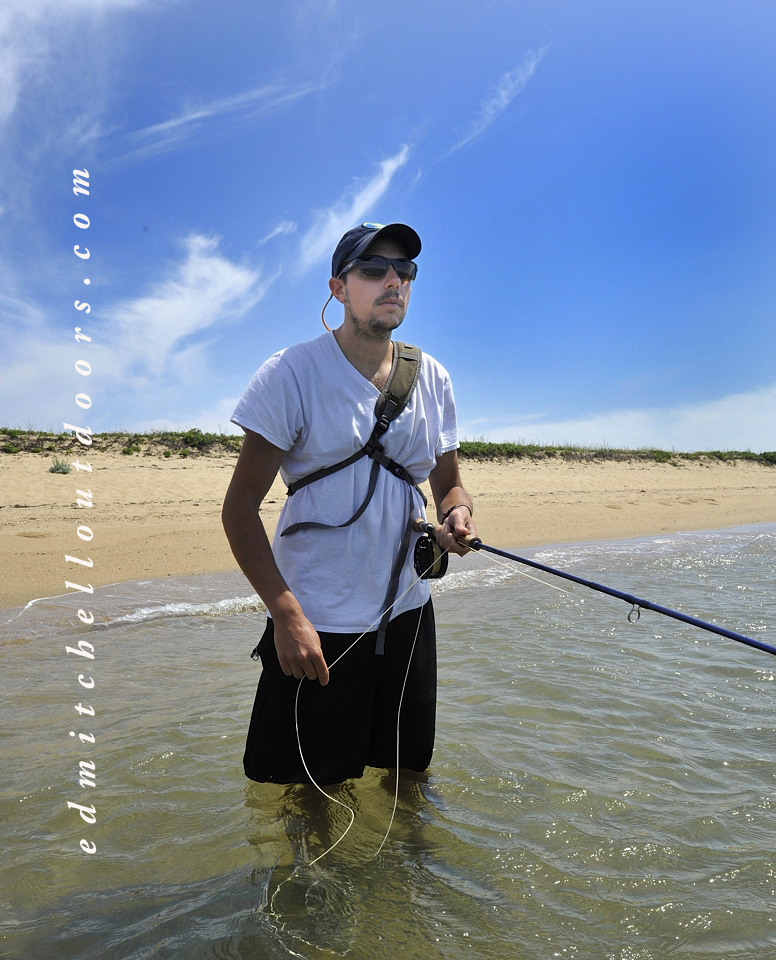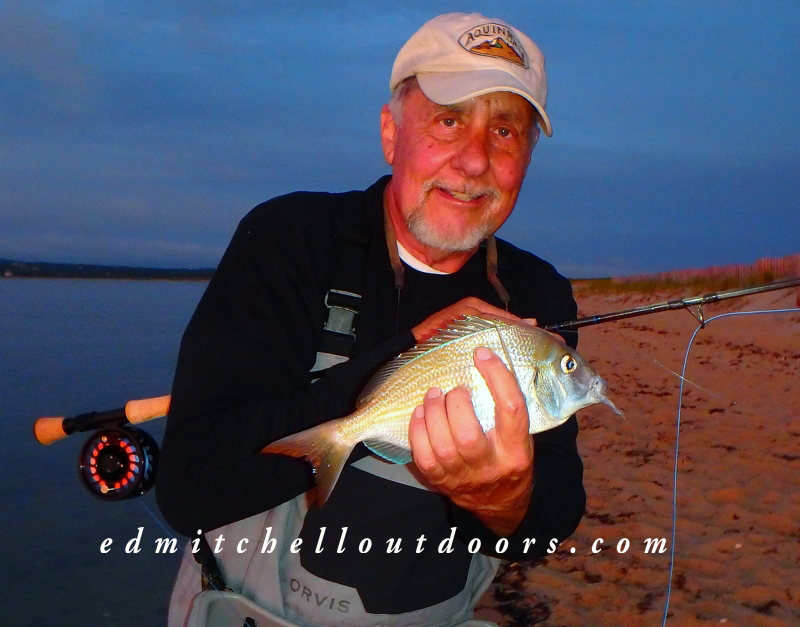
Now I know Dave’s a good angler, but this fish is something truly special. Man I think its solid gold!


Now I know Dave’s a good angler, but this fish is something truly special. Man I think its solid gold!

You might think twice about a critter related to scorpions and spiders, but fear not. The lowly horseshoe crab is providing medical miracles. Born before the dinosaurs, back 300 million years ago in the Cambrian, the horseshoe crab has developed a remarkable immune system slowly evolved over the eons. And this immune system is teaching doctors a great deal. Hail the horsecrab! https://www.yahoo.com/news/horseshoe-crabs-may-answer-safe-140539835.html
Last time we took a look at the widely used One-Hand “strip’ Retrieve. Now let’s look at an alternative method – the Two-Handed Retrieve. And why you should learn both.

I first wrote about this type of retrieve way back in the early 1990’s. And it’s a popular tactic here in the Northeast salt. You’ll come across it from New Jersey to Maine , although as you travel farther south it is far less common. Here’s how you do the Two-Handed retrieve: after the cast, put the cork grip up high under your casting arm, and pinch down with your upper arm enough to secure the rod in place. It doesn’t take much. (see photo) Typically at this point the reel slightly protrudes behind your armpit. Next reach forward with one hand and pull down on the fly line, as the other hand climbs to do the same. So you are making alternating pulls, one hand after the other. Pretty simple really. Oh, be sure to keep the rod tip fairly low as you do with the One-Hand Retrieve.
At this point you are essentially hand-lining the fly. If you feel a “take”, strike by pulling down on the fly line. That’s right -“strip” strike! Do not lift the rod for God’s sake! As the fish runs, use the hand under the rod to keep some tension on the fly line as to reach across with the other hand to remove the rod from under your arm. Sounds complex but it is very simple. Keep the rod tip low for a moment, as you clear line from the stripping basket. When things are good lift the rod up.
So why learn this tactic? For one thing, as we just saw, the Two-Handed Retrieve forces you to “strip” strike. Excellent. Way to go. Second because you are hand-lining the fly, this retrieve is very sensitive to even the lightest “take”. It also capable of a greater range of retrieve speeds from very fast to very slow. Additionally you can produce a steady speed retrieve which is how bait often swims. ( You can also a stop-and-go style if you like.) Need more? You don’t cut your damn finger up as can with the other retrieve. Ha. And lastly, since the rod is hands free, you can instantly use both hands to undo a tangle or a knot. Nice.
So is it all good? Of course not. It is harder to work a popper, although you can learn how. And some will argue its not as good at hopping a fly across a flat. But the biggest problem is that it is something different, and many anglers are creatures of habit. Oh well. My condolences.
You matter how fine a fly you tie, with all the right colors, the best materials, the perfect shape, size and hook; no matter how well you cast even if you can layout a 100 feet of line on a single pull, you still need to master the art of the retrieve. That’s right flies aren’t operator proof. Sure we have all seen times when a fly simply hanging in the current get clobbered, but day in and day out, it’s up to you to put live in the fly, to entice fish to grab it.
 This is too big a topic to tackle in one post. Still we can open the lid on the subject and take a peek inside. Let’s focus on the salt for the second. And where better to begin then with the single- handed “strip”. (See photo) We’ll cover the two-handed retrieve down the road.
This is too big a topic to tackle in one post. Still we can open the lid on the subject and take a peek inside. Let’s focus on the salt for the second. And where better to begin then with the single- handed “strip”. (See photo) We’ll cover the two-handed retrieve down the road.
The single-handed “strip” is the most popular and most well known style of fly retrieve. It is an obvious carry-over from freshwater fly fishing, and easy to learn. The index finger of the rod hand pinches the fly line to the rod, while the other hand pulls down (strips) short lengths of fly line causing the fly to propel back toward the angler.
This type of retrieve results in a “stop-go” action. You “strip”. The fly shoots forward. You pause. The fly slows down. And with a weighted fly you get kind of a “jigging” motion to the fly that can be very appealing, especially in colder parts of the season when fish are a bit sluggish water. It is a very valuable tool as well for hopping a fly along the bottom as one does in flats fishing. And it is an excellent tool for working poppers.
So is it perfect? No. For one thing schools of bait swim in a steady line. They don’t repeatedly stop and go. So the single-handed retrieve isn’t natural looking. Furthermore, this technique is not particular good at making an extremely fast retrieve. Too awkward. And extremely slow retrieves are a problem too. Why? Fish often hit the fly during the “pause”. And if you are creeping the fly along you’re apt to miss strikes. And get this: anglers using the single-handed retrieve typically set the hook by lifting the rod rather that strip-striking with the line. That’s bad, costly error. Raising the rod tip doesn’t consistently generate enough force to drive a saltwater hook home. Lastly after a day of this method you’re likely to find a cut or sore spot in your index finger that is slow to heal. Ouch.
Back from the Cape: Wow what a fun trip. Great weather and great moon tides. Memories of the good old days were rolling around in my head. It was wonderful to be back on Cape Cod.

My Son with a Striper
How was the fishing? Honestly not what we hoped for. Our crew did account for four slot size bass, but bass over five pounds were rare. The vast majority of bass were small schoolies, a few down to fifteen inches. And mixed in were tons of hickory shad; the largest one I had ever seen. Man they were everywhere. Monsters. Now “hicks” are fun on a fly rod, but when you’re searching for stripers one shad after another is hassle. And get this: mixed in with the “hicks” were scup. You heard right. Porgies in the surf. How wild is that? Never seen it before. And it sends one message loud and clear. There are zero big bass around. If there were the scup would scram fast.

Scup on a Fly
So where are all the big bass? I’m hoping they’re late leaving the spawning grounds in Chesapeake Bay. Hey they have yet to show in the Canal either. In fact the entire spring striper migration seems a little weird this year. I did a post on that awhile back. Is the whole coastal fishery undergoing a shift too? Perhaps were going to see some significant changes coming our way.